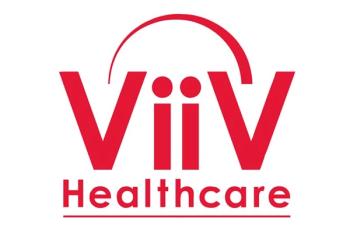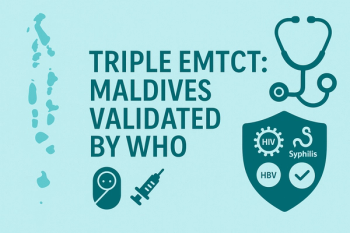
- August 2019
- Volume 4
- Issue 4
Doravirine: Researchers DRIVE for a Drug Ahead of Its Class
A novel NNRTI hits the market, but what place will it have in treatment?
BACKGROUND
Non-nucleoside reverse transcriptase inhibitors (NNRTIs) are a class of antiretroviral medications that have been used to treat HIV-1 since the early 1990s. Although they have become less popular than integrase inhibitor—based regimens, 5 NNRTIs are currently US Food and Drug Administration (FDA) approved for the treatment of HIV in combination with other antiretroviral medications.1
As a class, NNRTI-based regimens have demonstrated viro­logic potency and durability.1 However, their use has been limited by the prevalence of NNRTI-resistant strains of HIV-1 in treatment-naïve patients. The possibility of high-level resistance to older NNRTIs following a single mutation is also a concern.1 Researchers have sought to develop newer NNRTIs to overcome these obstacles.
Doravirine (Pifeltro), a new NNRTI, was approved by the FDA on August 30, 2018. It is currently available as a single agent (Pifeltro) and in a once-daily, fixed-dose combination of dora­virine, lamivudine, and tenofovir disoproxil (DOR/3TC/TDF, Delstrigo) that has been studied as a single tablet complete HIV-1 regimen. One of the key advantages that doravirine has over other NNRTIs is a novel pathway that maintains activity against HIV-1 viruses that contain common mutations that lead to resistance to other NNRTIs, especially to efavirenz and rilpi­virine.2 This advantage led to the inclusion of doravirine-based regimens as a recommendation for certain clinical situations.1
CLINICAL STUDIES
Delstrigo and Pifeltro were approved following the results of 2 randomized, double-blind, active-con­trolled phase 3 trials. The DRIVE-AHEAD trial compared 734 treatment-naïve patients with HIV-1 viral loads ≥1000 copies/ mL who were randomly assigned to receive DOR/3TC/TDF or efavirenz/emtricitabine/tenofovir diso­proxil (EFV/FTC/TDF, Atripla) once daily for 96 weeks. The primary end point was the proportion of patients with an HIV-1 viral load <50 copies/mL at week 48, with a predetermined noninferiority margin set at 10%. Of the 734 patients initially randomized, 728 were treated (364 per group).3,4
At 48 weeks, 84.3% of patients receiving DOR/3TC/TDF demonstrated sustained viral suppression compared with 80.8% of the patients in the EFV/FTC/TDF group, meeting the primary end point for noninferior efficacy (95% CI, —2.0% to 9.0%). Among the patients with particularly high baseline viral loads (≥100,000 copies/mL), 81.2% of patients in the Delstrigo group and 80.8% of patients in the EFV/FTC/TDF group achieved the primary end point at 48 weeks. In the safety evaluation, patients on DOR/3TC/ TDF had less dizziness (8.8% vs 37.1%), sleep disorders/ disturbances (12.1% vs 25.2%), and altered sensorium (4.4% vs 8.2%) compared with patients who received EFV/FTC/ TDF. Also noted was a favorable lipid profile with minimal changes in low-density lipoprotein cholesterol and non–high-density lipoprotein cholesterol seen in the DOR/3TC/TDF group compared with increases in the EFV/FTC/TDF group.3,4
The DRIVE-FORWARD trial looked at 769 patients randomly assigned to doravirine or darunavir plus ritonavir in combination with 2 nucleoside reverse transcriptase inhib­itors (NRTIs), either tenofovir disoproxil and emtricitabine or abacavir and lamivudine. There were 385 patients assigned to the dora­virine group and 384 to the ritonavir-boosted darunavir group. Again, the primary end point of the study was the proportion of patients with an HIV-1 viral load <50 copies/mL at week 48, with a prede­termined noninferi­ority margin set at 10%. At 48 weeks, 84% of patients in the dora­virine group and 80% in the darunavir group achieved the primary end point of viral loads ≤50 copies/mL (95% CI for difference, —1.6% to 9.4%), satisfying noninferiority criteria. The most common adverse effects were diarrhea and nausea, both of which occurred more frequently in the darunavir group. As seen in the DRIVE-AHEAD trial, there was a favorable lipid profile for the doravirine-containing regimen compared with the baseline drug.5,6
A third study was performed to demonstrate the efficacy of switching a patient’s antiretro­viral therapy to a doravirine-based regimen. The DRIVE-SHIFT trial evaluated the efficacy of switching stable, virally suppressed patients to DOR/3TC/TDF. In an open-label, active-con­trolled, noninferiority trial, patients with HIV-1 virologically suppressed for ≥6 months on 2 NRTIs plus a boosted protease inhibitor, boosted elvitegravir, or an NNRTI were random­ized to switch to DOR/3TC/TDF or to continue their current therapy. The primary endpoint was the proportion of patients with HIV-1 viral load <50 copies/mL, with comparison between DOR/3TC/TDF at week 48 and the baseline regimen at week 24, with a predetermined noninferiority margin set at 8%. A total of 670 patients were treated, with 447 on DOR/3TC/ TDF and 223 on their baseline regimen.7,8
At week 24, 93.7% of patients on DOR/3TC/ TDF and 94.6% on their baseline regimen had viral loads ≤50 copies/mL. At week 48, 90.8% of patients on DOR/3TC/TDF had viral loads ≤50 copies/mL, demonstrating noninferiority based on the predetermined noninferiority margin (95% CI for difference, -7.9% to 0.3%). Finally, the advantageous lipid profile with the doravirine-containing regimen compared with the ritonavir-boosted protease inhibitor held true.7,8
ADVSERSE REACTIONS, WARNINGS AND PRECAUTIONS
When deciding if a doravirine-containing antiretroviral regimen is appropriate to prescribe, multiple factors must be consid­ered. Both doravirine alone and DOR/3TC/ TDF are prescribed once-daily and can be taken with or without food. There is no creat­inine clearance cut-off to prescribing either regimen; however, obtaining baseline creat­inine, estimated creatinine clearance, urine glucose, and urine protein in all patients in whom DOR/3TC/TDF is started is recom­mended, due to the tenofovir disoproxil in the regimen.9
Patients should also be screened for hepa­titis B before starting therapy, as DOR/3TC/ TDF contains a boxed warning regarding posttreatment acute exacerbation of hepatitis B infection. There is also a contraindication to prescribe a doravirine regimen when the patient requires a strong cytochrome P450 3A inducer due to the fact that doravirine is a sensitive substrate of the enzyme.9
Doravirine-based regimens have been generally well tolerated; the most common adverse reactions seen in studies include dizziness, nausea, and diarrhea. There are no current data available regarding the use of doravirine-containing regimens in preg­nancy. Doravirine—and the NNRTI class, in general—have no activity against HIV-2 and should be avoided in these patients.9
PLACE IN THERAPY
DOR/3TC/TDF and dora­virine offer several bene­fits over existing NNRTIs. First, doravirine can be given without attention to whether a patient is on an acid-reducing agent, an advantage over other drugs in the class. Doravirine also has a more favorable lipid profile compared with the other NNRTIs. Finally, given doravirine’s activity against strains with resis­tance to other NNRTIs, it can be used for patients with known resistance to other drugs in the class.
Although doravirine has advantages compared to other NNRTIs, its place in the overall treatment landscape is unclear. Integrase inhibitor—based regimens remain the preferred choice for initial therapy in guide­lines published by major HIV governing bodies, but doravirine has not been compared with integrase-based regimens in any trials. Also, because once-daily DOR/3TC/TDF contains tenofovir disoproxil as opposed to the newer tenofovir alafenamide, patients on DOR/3TC/TDF are at increased risk for renal and bone toxicity relative to combinations that contain the newer formulation.
Although the overall role of NNRTIs in HIV therapy has declined, doravirine offers an improved choice when they are still useful. Doravirine-based regimens can be useful for patients who are unable to tolerate inte­grase inhibitors, who are HLA-B*5701—positive (therefore limiting abacavir-based regimens), and who have underlying psychiatric illnesses who are at increased risk of exacerbation with other NNRTIs.
DeRose is an infectious disease physician at Jefferson Health New Jersey Infectious Diseases. He recently completed his infectious disease fellowship at Temple University Hospital in Philadelphia, Pennsylvania, and is a former internal medicine resident and chief resident at Rutgers New Jersey Medical School in Newark.
References:
- Molina JM, Squires K, Sax PE, Cahn P, et al; DRIVE-FORWARD Study Group. Doravirine versus ritonavir-boosted darunavir in antiretroviral-naive adults with HIV-1 (DRIVE-FORWARD): 48-week results of a randomised, double-blind, phase 3, non-inferiority trial. Lancet HIV. 2018 May;5(5):e211-e220. doi: 10.1016/S2352-3018(18)30021-3.
- Orkin C, Squires KE, Molina JM, et al; DRIVE-AHEAD Study Group. Doravirine/lamivudine/tenofovir disoproxil fumarate is non-inferior to efavirenz/emtricitabine/tenofovir disoproxil fumarate in treatment-naive adults with human immunodeficiency virus-1 infection: week 48 results of the DRIVE-AHEAD trial. Clin Infect Dis. 2019 Feb 1;68(4):535-544. doi: 10.1093/cid/ciy540.
- Johnson M, Kumar P, Molina JM, et al; DRIVE-SHIFT Study Group. Switching to doravirine/lamivudine/tenofovir disoproxil fumarate (DOR/3TC/TDF) maintains HIV-1 virologic suppression through 48 weeks: results of the DRIVE-SHIFT trial [published online April 11, 2019]. J Acquir Immune Defic Syndr. 2019 Aug 1;81(4):463-472. doi: 10.1097/QAI.0000000000002056.
- Comparison of NNRTI vs PI/r: DRIVE-FORWARD Study: DOR + 2 NRTI vs DRV/r + 2 NRTI. www.arv-trials.com/first_line/eng/comp_NNRTI-vs-PI-r/DRIVE-FORWARD.asp. Updated November 5, 2018. Accessed June 10, 2019.
- Comparison of NNRTI vs NNRTI: DRIVE-AHEAD Study: DOR/3TC/TDF vs EFV/FTC/TDF. www.arv-trials.com/first_line/eng/comp_NNRTI-vs-NNRTI/DRIVE-AHEAD.asp. Updated April 9, 2017. Accessed June 10, 2019.
- Pozniak, A. Switch to DOR/3TC/TDF: DRIVE-SHIFT Study: Switch to DOR/3TC/TDF. www.arv-trials.com/showStudy.asp?Study=DRIVE-SHIFT. Accessed June 10, 2019.
- Panel on Antiretroviral Guidelines for Adults and Adolescents. Guidelines for the Use of Antiretroviral Agents in Adults and Adolescents Living with HIV. HHS website. aidsinfo.nih.gov/contentfiles/lvguidelines/AdultandAdolescentGL.pdf. Updated October 25, 2018. Accessed June 10, 2019.
- FDA Approves Merck’s DELSTRIGO (doravirine/lamivudine/tenofovir disoproxil fumarate), a once-daily fixed-dose combination tablet as a complete regimen and PIFELTRO (doravirine), an NNRTI, both for the treatment of HIV-1 in appropriate patients [news release]. Kenilworth, NJ: Merck; August 30, 2018. mrknewsroom.com/news-release/research-and-development-news/fda-approves-mercks-delstrigo-doravirine-lamivudine-tenof. Accessed June 10, 2019.
- Sax, P. HIV and ID observations: doravirine sets a new standard for NNRTIs — but what role in HIV treatment today? NEJM Journal Watch. September 9, 2019. blogs.jwatch.org/hiv-id-observations/index.php/doravirine-sets-new-standard-nnrtis-role-hiv-treatment-today/2018/09/09/. Accessed: June 11, 2019.
Articles in this issue
over 6 years ago
Two Allergies or Cross-Reactive?over 6 years ago
Maximize Contact and Minimize Isolationover 6 years ago
2019: Measles Outbreaks in the United StatesNewsletter
Stay ahead of emerging infectious disease threats with expert insights and breaking research. Subscribe now to get updates delivered straight to your inbox.























































































































































































































































































